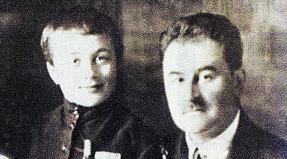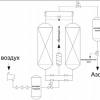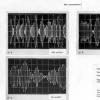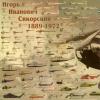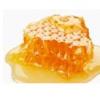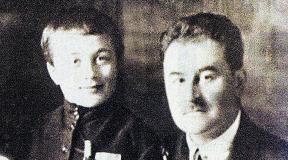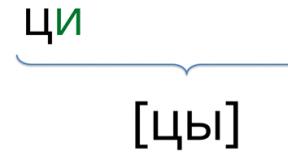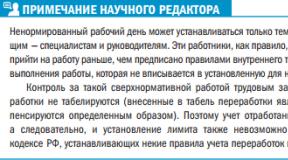Uniform and variable training methods. Interval method. Re-variable training method
The repeated method is characterized by repeated exercises at rest intervals, during which a fairly complete restoration of performance occurs. When using this method, the training effect on the body is provided not only during the period of performing the exercise, but also due to the summation of the body’s fatigue from each repetition of the task.
The main goal of the repeated method is to perform movements, actions, tasks a certain number of times, trying to adhere to the required form and character and achieving improvement in them. Such methods are also sometimes called training methods, gymnastics. Such methods may differ in the nature and magnitude of the efforts exerted (maximum, moderate impact methods, etc.); by the nature of repetition (repeated, interval, etc. methods); by the nature of execution (tempo, uniform, variable, etc.); according to the composition of the exercise (holistic, dismembered, etc.); by direction (facilitating, complicating, etc.). Differences in methods are also determined by the external conditions in which educational and training tasks are performed, as well as the use of equipment, simulators, special equipment, etc.
The repeated method is used in both cyclic and acyclic exercises. The intensity of the load can be: 75-95% of the maximum in this exercise, or about the maximum - 95-100%. The duration of the exercise can be very varied. For example, in running, rowing, swimming, etc. work is applied on short, medium and long segments. The speed of movement is planned in advance, based on the personal record for this segment. Exercises are performed in series. The number of repetitions of exercises in each series is small and is limited by the ability of the trainees to maintain a given intensity (speed of movement, tempo of movements, amount of external resistance, etc.).
Rest intervals depend on the duration and intensity of the load. However, they are installed in such a way as to ensure restoration of performance before the next repetition of the exercise.
In cyclic exercises, repeated work over short periods is aimed at developing speed abilities. For medium and long speed endurance.
Moving with high intensity in skating, walking and other exercises over relatively long periods contributes to the development of a “sense of competitive pace” and improvement of movement technique. In this regard, the repeated method is sometimes called the repeated-tempo training method.
The nature of the energy supply when working on short segments is mainly anaerobic, and on medium and long segments it is mixed, i.e. aerobic-anaerobic. In acyclic exercises (weightlifting, jumping, throwing), along with improving movement technique, this method is used mainly to develop strength and speed-strength abilities.
The following tasks are solved using the repeated method: development of strength, speed and speed-strength capabilities, speed endurance, development of the necessary competitive tempo and rhythm; stabilization of movement technique high speed, mental stability.
In practice, the repeated method is used in several variants. The most common are the following:
1) repeated work with uniform, non-limiting intensity (90-95% of the maximum) to develop the necessary competitive tempo and rhythm, to stabilize technique at high speed, etc.
2) repeated work with uniform maximum intensity.
When using short segments, mainly speed abilities are developed. Longer segments are included in classes relatively rarely and only in small series for maximum impact on volitional qualities.
| Method name | Main purpose | Exercise method | Content | Intensity | Volume | Rest interval | Number of classes per week | Place in the larger training cycle | ||||
| Heart rate (bpm) | % of competitive | % of maximum | Duration of continuous operation | Number of repetitions in one approach | Number of approaches, series | |||||||
| Repeated | 1. Increasing special preparedness for speed-strength work. 2. Developing special endurance. | Favorite sport special exercises. Running, sports, walking, skiing, cycling, rowing, etc. | Repeated execution of training work. In easy conditions In difficult conditions Completing a distance shorter than the competitive one | 180-190 | 103-100 | 95-100 90-100 - | 1. 5-15 sec 10-30 sec 5-10 sec 2. 2/4-3/4 of the main distance 3. 1.0-1.5 of the main distance 4. According to the type of sport and competition rules. | - - | 6-12 and more 6-10 5-8 3-12 2-10 | 3-5 minutes 3-5 minutes 5-8 minutes 8-12 minutes or more 8-12 minutes or more Ensuring the restoration of coordination capabilities. | 3-4 2-3 2-3 1-2 1-2 4-5 and daily | Special preparatory period Competition period Same Same Special preparatory period (3-4 months) |
Table 16
Basic training characteristics of the repeated method
The advantages of the repeated method lie primarily in the possibility of precise dosage of the load, as well as its focus on improving the economical use of muscle energy reserves and muscle resistance to oxygen deficiency. In addition, if all previous methods mainly act on the cardiovascular and respiratory systems and less on muscle metabolism, the repeated method primarily improves muscle metabolism.
Disadvantage of the repeated method is that it has a strong effect on the endocrine and nervous system. When working with insufficiently prepared students, it should be used with great caution, since maximum loads can cause overstrain of the body, violations in technique and the consolidation of incorrect motor skills.
The quantitative and qualitative components of the load are organically interrelated, being two components any load. Depending on the structure of the athlete’s training process (tasks, means, methods, level of load, etc.), different relationships are created in quantitative and qualitative components and, accordingly, differences in adaptation processes.
As you know, quantitative savings create a qualitative leap. This should be the result of a specially organized preparation process, and not an accident (for example, an athlete injured his leg, rested more than usual and then showed a record result). In this regard, it is important to keep the following points in mind:
a) morphological, biochemical and neuropsychic changes and improvements in the body that occur under the influence of sports training cause changes in its functionality. At the same time, “morphological and physiological phenomena, form and function mutually determine each other,” occurring simultaneously;
b) training in exercises that require the manifestation, but not to the same extent, of a number of quality and functionality, causes the same heterochromic adaptation. Because of this, some components of preparedness improve more, others less, and others even less. Consequently, after training aimed at improving lagging qualities and functions, when all components that make up preparedness as a whole reach the required levels (“delayed transformation” according to L.P. Matveev).
At the same time, it must be said that “delayed transformation” may not exist, although based on measurements such an assumption is realistic. For example, as you know, under the influence of regular training, subtle positive changes occur in the body. If they are measured with special equipment every day, a curve will be obtained that tends to go gradually upward. Usually they measure much less often and therefore there is a qualitative leap. So, if a beginner who could do pull-ups on the bar only 5 times, after daily training three times a day for a week, manages to do 8-10 pull-ups, it will look like a leap. But if the same beginner strives to do one more pull-up each time, then the result will be an upward curve throughout the week. Of course, this only applies to training in elementary movements.
c) changes in the body have accumulated under the influence of training, especially associated with a large expenditure of energy and nervous strength - after the rest necessary to restore resources, they give a qualitative leap;
d) changes in the athlete’s body, in the functions of his organ systems, that occurred under the influence of training, may not give a jump due to the athlete’s inability to demonstrate his capabilities at a new, higher level. The coach’s explanation and the athlete’s understanding of new possibilities create a qualitative leap;
e) positive changes in the athlete’s preparedness may not fully manifest themselves due to a psychological barrier - the inability to exceed a given level of sports movement;
f) in mastering sports technique and tactics, in cultivating the ability to demonstrate high levels of strength, speed, endurance and other qualities in coordination movements that require the formation of a strong skill through repetition over a number of days, breaks (hours, days) are necessary in which the processes continue, refining skills.
Qualitative changes (morphological, physiological, biochemical, psychological and biomechanical) determine an increase in the quantitative side in the activity of the athlete’s body. In this regard, you need to consider the following provisions:
1) qualitative changes in relation to a specific exercise allow you to increase the duration of continuous and repeated performance of the same exercise, especially at reduced intensity. An important factor in increasing duration is economization in the functions of organs and systems, ensuring the same work is performed with muscular expenditure of energy resources;
2) qualitative changes create the opportunity to increase time (number of repetitions, number of attempts, etc.) in order to improve the technique of the same exercise, including at maximum intensity;
3) qualitative improvements allow you to increase the intensity in training and competitive exercises performed with the same duration as before.
To develop endurance, a variety of training methods are used, which can be divided into several groups: continuous and interval, as well as control (or competitive) training methods. Each method has its own characteristics and is used to improve certain components of endurance, depending on the parameters of the exercises used. By varying the type of exercise (walking, running, skiing, swimming, exercises with weights or on apparatus, exercise machines, etc.), their duration and intensity (speed of movement, power of work, size of weights), the number of repetitions of the exercise, as well as the duration and the nature of rest (or recovery intervals), you can change the physiological orientation of the work performed.
Uniform continuous method.
The uniform continuous method consists of a single, uniform performance of exercises of low and moderate power lasting from 15 to 30 minutes and up to 1 to 3 hours, that is, in the range of speeds from normal walking to tempo cross-country running and other types of exercise of similar intensity. This method develops aerobic abilities. In such work, the volume of training load required to achieve the appropriate adaptation effect must be at least 30 minutes. Poorly trained people cannot withstand such a load right away, so they must gradually increase the duration of training work without increasing its intensity. After approximately a 3-minute run-in period, a steady-state level of oxygen consumption is established. By increasing the intensity of work (or speed of movement), aerobic processes in the muscles are intensified. The higher the speed, the more anaerobic processes are activated and the reactions of the vegetative systems to ensure such work are more pronounced, and the level of oxygen consumption rises to 80 - 95% of the maximum, but does not reach its “critical” values. This is quite stressful work for the body, requiring significant tension in the activity of the cardiovascular and respiratory systems, and the manifestation of volitional efforts. In this case, the heart rate reaches 130-160 beats/min, the volume of pulmonary ventilation is 160-190 liters/min, the pressure in the first 3-4 minutes increases to 180-200 mmHg, and then stabilizes at approximately 140 -160.
By changing the intensity (speed of movement), different components of aerobic abilities are affected. For example, slow running at an anaerobic threshold speed is used as a “basic” load to develop aerobic capacity, recover from large volumes of more intense loads, and maintain a previously achieved level of general endurance.
Variable continuous method.
This method differs from the regulated uniform method by periodically changing the intensity of continuously performed work, characteristic, for example, of sports and outdoor games, martial arts. IN athletics This kind of work is called “fortlek” (“game of speeds”). In it, during a long run on terrain (cross), accelerations are performed on segments from 100 to 500 meters. This variable power operation is typical for running up hills or skiing over very rough terrain. Therefore, it is widely used in their training by skiers and middle and long distance runners. It noticeably increases the intensity of the body's vegetative reactions, periodically causing maximum activation of aerobic metabolism with a simultaneous increase in anaerobic processes. The body works in a mixed aerobic-anaerobic mode. In this regard, fluctuations in the speed or intensity of exercise should not be large so that the predominantly aerobic nature of the exercise is not disrupted.
The alternating continuous method is designed to develop both specific and general endurance and is recommended for well-trained individuals. It allows you to develop aerobic capabilities, the body’s ability to tolerate hypoxic conditions and oxygen “debts” that periodically arise during acceleration and are eliminated with a subsequent decrease in the intensity of the exercise, teaches those involved to “endure”, i.e. develops strong-willed qualities.
Competitive method.
The control (competition) method consists of performing tests once or repeatedly to assess endurance. The intensity of execution may not always be maximum, since there are also “unlimited” tests. The level of endurance development is most reliably determined by the results of participation in sports competitions or control tests.
The uniform training method consists of continuously performing work (for example, running) of moderate intensity, which helps improve aerobic processes in the body.
Continuous work of varying intensity is the basis of the variable training method. Physical activity with this method is increased by increasing the duration of low-intensity work (for example, alternating running at medium or high speed with slow running). The ability to switch from one activity mode to another allows you to improve general (and special) endurance. The value of the variable method is that it is possible to avoid monotony and, by changing the processes of excitation and inhibition in the central nervous system, ensure high performance of the body.
Repeating loads with sufficient rest intervals between them is the essence of the repeated training method. For example, in running, this method is characterized by the use of both standard and different length and intensity segments, repeated at rest intervals that are not planned in advance (in terms of time or distance of slow recovery running). The combination of loads creates favorable preconditions for maintaining physical strength, performing subsequent work at a sufficiently high speed.
INTERVAL AND REPEATED TRAINING METHODS USED IN ENDURANCE SPORTS USING A HEART RATE METER
INTERVAL AND REPEATED TRAINING METHODS USED IN ENDURANCE SPORTS USING A HEART RATE METER
These training methods were developed by the authors of the article at the Moscow State Academy physical culture based on the use of heart rate monitors (HRMs) to monitor training and competitive loads in the preparation of endurance athletes. They are still unknown to a large circle of scientists, coaches and athletes.
Athletes in cyclic endurance sports (skiing, biathlon, skating, cycling, endurance running and race walking, swimming, rowing) can only maintain their maximum speed of movement for a short period of time. If the work needs to be done for a long time, they reduce the speed of movement and work with less effort or alternate periods of intense work with periods of rest or low-intensity work. Fatigue, which occurs during intense muscular activity, is caused by the accumulation of breakdown products of energy substances in the muscles, primarily the accumulation of lactic acid, the depletion of glycogen reserves in the muscles, and the continuous increase in the amount of oxygen debt. When athletes in cyclic endurance sports interrupt intense exercise with periods of rest, the body is able to partially eliminate the factors that cause the onset of fatigue: replenish glycogen stores in the muscles, reduce lactic acid levels, and oxidize other breakdown products of energy substances in the muscles. Such intermittent nature of the loads used in training methods (interval, repeated, variants of series of training segments, etc.) allows athletes to perform more intense work and at the same time avoid the cumulative effect of fatigue.
Interval training is one of the methods of training athletes, in which the training effect on his body is exerted by repeatedly repeated “portions” of work of submaximal intensity, alternating with precisely dosed rest pauses. The duration of each rest is short - it ensures only a partial restoration of the heart rate (heart rate) before the start of the next “portion” of work. For clarity, we give an example of interval training on short segments of 400 m X 20 for stayers who use a heart rate monitor in their preparation to control training and competitive loads. The pulse mode for overcoming 400 meter segments in this method must be planned based on the athlete’s competitive pulse at the main distance. Let’s say your competitive heart rate at the main distance (10,000 m) is 186 – 190 beats/min. Therefore, your pulse modes during interval training can be the following: 166 – 170 beats/min; 171 – 175 beats/min. 166-175 /min. or 176 – 180 beats. /min. The duration of rest by jogging (or partially walking) is selected according to the duration of heart rate recovery to 120 - 150 beats/min. And only after this can you continue to overcome the next 400 meter segment.
It cannot be said that there is a consensus about the interval method, its application and value among scientists, coaches and athletes, although the growth of world records in the 50s of the last century was associated with the use of this method. The natural question is: what is this connected with? Some experts think. That the main attention in interval training should be paid to a constant rest interval between segments, as well as to the form of rest. Others argue that the main thing in this training method is the length and time of overcoming training segments and their number. Still others say that the main thing in this method is to pay attention to the heart rate during training periods, which should not exceed 170 - 180 beats/min for athletes, and during the jogging interval the heart rate should reach a level of 120 - 140 beats/min, but the rest time should not exceed 1 minute. 30 sec.
It should be noted that specialists have continued to improve the interval method all these years. Especially in recent years in connection with the introduction of heart rate monitors (i.e., heart rate monitors) to monitor training and competitive loads in endurance sports.
Hence the summary: interval training can currently be divided into two variants.
1. SLOW INTERVAL TRAINING
Its essence is for the athlete to overcome training segments in a pulse mode lower than his competitive pulse and with short rest intervals, which should ensure incomplete recovery. As an example, let’s take a runner training using a slow interval method (running 5 x 800 m) in a pulse mode of 181 – 190 beats/min. duration of the rest interval by jogging (or partially walking) until the pulse rate is 140 - 150 beats/min. The competitive heart rate of this runner at the main distance (1500 m) is 201 – 205 beats/min.
This method is used for the development of the cardiovascular system, which affects the improvement of the athlete’s general endurance rather than special one. Therefore, it should not be used frequently in the preparation of runners training for the 800m distance, and probably should not be used during preparation for the main event at the 1500m distance.
2. FAST INTERVAL TRAINING
Its essence is that, compared to slow interval training, it allows for a higher pulse rate to overcome the segments and a longer rest between training segments, and, consequently, a greater degree of recovery.
The same training example - running 5 X 800 m, used by the athlete a few days later was modified and turned into an example of fast interval training 5 X 800 m in a pulse mode of 191 - 195 beats / min. and the duration of the rest interval by jogging until the pulse rate is 120 beats. /min.
This training method primarily affects the development skeletal muscles legs It is aimed mainly at improving the special endurance and speed of the runner and thereby increasing the endurance of skeletal muscles and the endurance of the cardiovascular system, their ability to tolerate the accumulation of waste products and work in anaerobic conditions (without oxygen).
The slow interval method is mainly used in the initial stages of preparation, while the fast method is used in competitive seasons.
However, for a training method to be classified as interval training it must:
1) consist of a series of repetitions of training segments, overcome in a pulse mode lower than with the repeated method.
2) include a rest interval of short duration, sufficient for only a partial recovery of the heart rate after the previous “portion” of work.
The term “interval training” is often used erroneously when describing any training method that involves repeating segments alternating with rest intervals. This term, in its origin, is actually associated with the phrase “interval” of rest. But the rest interval is far from the main component of this method, but this will be discussed below.
If in interval training, for example, a series of overcome segments is interrupted by a longer rest interval, during which the athlete’s heart rate may drop almost to a normal level (i.e., below 90 - 100 beats per minute), then such training turns into a repeated one. The exact line between where one training method ends and another begins depends in most cases on the interpretation of the trainer.
Repeated training is the athlete overcoming several segments of constant length, which can be either shorter than the competition distance, or equal to it, or longer than it. The pulse mode for overcoming the above segments when using the repeated method must be planned based on the athlete’s competitive pulse, which he has at the main distance.
For clarity, we will give an example of repeated training for an average athlete over long periods according to the pulse mode: 1000 m X 2 with a rest interval until the heart rate is almost completely restored. The competitive heart rate of a runner at the main distance (800 m) is 191 – 195 beats/min. Consequently, the athlete’s pulse rate when using the repeated method should be slightly higher than with the fast interval method, i.e. 186 – 190 beats/min. During the rest interval (walking or sitting), the athlete’s heart rate should reach a level below 90 – 100 beats/min. And only after this can you continue repeating the next segment. Those using rest intervals in the repeated method must ensure a relatively complete recovery of the athlete’s body before the start of the next “portion” of work.
The impact of a repeated training method on an athlete’s body is always acute, so it should be used carefully and in moderation. A small number of sprint segments (30 m X 2 - 3; 60 - 2 - 3; 100 m 1-3), performed repeatedly, can be included in almost every main training session. However, the volume of running over short distances (200, 300, 400 m) when using the repeated method in one training session should not be more (1000 - 2000 m) for intermediate athletes and stayers.
Properly applied repeated training method increases the athlete's ability to maintain a fairly high heart rate during running during the "average period" of time. Repeated training is not sprinting or running at full speed. The athlete runs with a given and controlled heart rate, which depends on what distance and pulse rate he needs to prepare his body for. This type of training is a means of developing specialized endurance and speed, and can also be considered as a method aimed at developing tempo. Therefore, this training method finds its main application in competitive seasons.
In practice, interval and repeated training raises many more questions among coaches and athletes than, for example, the method of continuous long-term loads. Table 1 shows the main features of interval and repetition training methods.
Table 1. Features of interval and repeated training methods
|
Training method |
Competitive heart rate of an athlete during the main distance |
Average heart rate (bpm) |
Developed qualities |
Physiological changes in the body |
|
Interval For example: 400m X15, in pulse mode 176 – 180 beats/min rest interval up to 140 – 150 beats/min jogging |
191 – 195 beats/min |
Before the next repetition 140 beats/min, after running the segment - 178 beats/min |
1. Endurance (mainly) 2. Speed qualities (to a lesser extent) 3. Ability to withstand fatigue during intensive work in conditions of oxygen debt (to a small extent) |
1. Improving the activity of the cardiovascular system by increasing the stroke volume of the heart and expanding the capillary network in the muscles. 2. Improving the ability to perform muscle work in aerobic conditions. 3. Increased glycogen reserves in muscles. 4. Improving intracellular metabolic processes associated with endurance work |
|
Repeated For example: 400 m X5 in pulse mode 186 – 190 beats/min; rest interval up to 90 – 100 beats/min walking or sitting |
191 -195 beats. /min |
Before the next repetition – 96 beats/min; after running the segment – 189 beats/min |
1. Endurance (to a much lesser extent than with the interval method). 2. Speed qualities (to a much greater extent than with the interval method). 3. The ability to resist fatigue during short-term work (the ability to cover a short distance at high speed). |
1. Increased muscle strength. 2. Improvement of intracellular metabolic processes that ensure high-intensity muscle activity under anaerobic conditions. 3.Increasing the body’s ability to resist fatigue, in particular, the ability to endure unpleasant painful sensations fatigue. |
When including intermittent training methods (interval, repeated, variants of series of training segments, etc.) in training program The coach or athlete should consider five components in these methods:
1) Length of training segments;
2) Pulse mode for overcoming segments (i.e. running speed);
3) Rest interval between repetitions;
4) Number of repetitions in a training series;
5) Form of rest
It should be noted that each component of these methods above affects the effectiveness of the training. Therefore, based on our scientific study, we methodological literature both foreign and domestic, as well as our own studies presented on this issue, generalizations were made on these parameters, which we will dwell on in more detail.
TRAINING LEG LENGTH
As an analysis of scientific and methodological literature and practical experience has shown, the most common segments that middle and long distance runners use in their training when they use the interval or repeated method are the following:
Athletes Training segments
Intermediate 200, 300, 400, 600, 800, 1000, 1200, 2000 m
Stayers 200, 300, 400, 800, 1000, 1200, 2000, 3000, 5000 m
In other words, with interval or repeated methods, the length of training segments can be the same or different. However, segments equal to the competitive distance are rarely used in training runners. Overcoming by an athlete sections longer than his competitive distance (this is especially desirable in the spring and autumn stages) increases the runner’s endurance and helps create a certain psychological mood. An athlete who trains at distances longer than the competition becomes confident that he will be able to show better results at shorter distances. However, this approach should not replace training in shorter periods than competition, especially at the stage of immediate preparation for competition.
PULSE MODE FOR OVERCOMING LENGTHS (I.E. RUNNING SPEED)
In order for an athlete to select the desired pulse mode for overcoming training segments when using the interval and repeated method, the coach or the athlete himself must know his competitive pulse at the distances at which he is going to start. It should be noted that many coaches or athletes themselves do not know their competitive heart rate, both at the main distance and at adjacent distances. Therefore, it is necessary to approach this important issue competently, i.e., measure the competitive heart rate at the distances at which the athlete competes using a heart rate monitor POLAR RS 800 SD during the competition itself.
Taking into account the fact that each athlete in endurance running has a purely individual heart rate, we, based on practical experience in the use of heart rate monitors to monitor training and competitive loads, have identified heart rate regimes in repeated and interval training methods during training periods, depending on the competitive heart rate of athletes at the main distance (see Table 2).
TABLE 2.
PULSE MODES IN REPEATED AND INTERVAL METHODS
TRAINING DEPENDING ON COMPETITION HEART RATE
ATHLETE AT THE MAIN DISTANCE
|
Competitive heart rate of an athlete at the main distance (bpm) |
Pulse mode for overcoming training segments using the repeated method (beats/min) |
Pulse mode for overcoming training segments in the fast interval method (bpm) |
Pulse mode for overcoming training segments in the slow interval method (bpm) |
|
216 - 220 |
211- 215 |
206 - 210 |
196 – 205 |
|
211 - 215 |
206 -- 209 |
201 - 205 |
191 – 200 |
|
206 - 210 |
201 – 205 |
196 - 200 |
186 – 195 |
|
201 – 205 |
196 – 200 |
191 – 195 |
181 – 190 |
|
196 – 200 |
191 – 195 |
186 – 190 |
176 – 185 |
|
191 – 195 |
186 – 190 |
181 – 185 |
171 – 180 |
|
186 – 190 |
181 – 185 |
176 – 180 |
166 – 175 |
|
181 – 185 |
176 – 180 |
171 – 17 5 |
161 – 170 |
|
176 – 180 |
171 – 175 |
166 – 170 |
156 – 165 |
|
171 – 175 |
166 – 170 |
161 – 165 |
151 – 160 |
Based on the fact that each athlete has a purely individual competitive heart rate, some athletes may not fall within the range of competitive heart rates given in the table. In this case, the athlete himself needs to determine it for himself. It’s not hard to guess how to do this: by recording your pulse using a heart rate monitor both at the main competitive distance and at adjacent ones.
As you can see from the table, during repeated training, the running pulse rate of athletes during training segments should always be higher than during interval training. And in conclusion, let us dwell on the general patterns for this parameter.
If an athlete overcomes a training segment in a pulse mode that is far from his competitive pulse at the main distance, then this circumstance does not have the proper effect on special endurance.
If an athlete overcomes a training segment in a pulse mode very close to his competitive pulse at the main distance, therefore, according to physiology, a large oxygen debt is formed. In other words, the athlete develops speed and special endurance.
DURATION OF REST INTERVALS
With the interval method, short rest pauses are used, while with the repeated method, long rest breaks are used. In other words, the athlete begins the next repetition of the training segment with the slow interval method when the heart rate reaches a pulse rate level of 140–150 beats/min during rest while jogging (or partially walking), and in the fast interval method a level of 120–130 beats/min . But with the repeated method, the athlete can begin the next repetition of the training segment only after his heart rate reaches 90 - 100 beats per minute while resting while walking or sitting, although such a decrease is not always possible in practice.
The duration of rest intervals between repetitions depends on what quality the athlete should develop. And in conclusion, we will dwell on the general patterns for this parameter:
Reducing rest intervals and using low-pulse modes to overcome training periods by athletes reduces the impact of training on speed qualities and increases the impact on endurance.
Increasing rest intervals (within varying limits) allows the athlete to use higher heart rate regimes in overcoming training periods.
NUMBER OF REPEATS
The number of segments overcome by an athlete in a series of repeated or interval methods depends on many factors (meaning the condition of the athlete, the stage of training, etc.). However, it should be noted that there are general principles, guided by which a coach or the athlete himself can select the required number of repetitions:
The shorter the competitive distance for which an athlete is preparing, the fewer repetitions in a series he must perform at the same intervals. For example, using the interval training method, a stayer can perform a series of 1000 m X 10 in the jogging interval to a heart rate of 140 - 150 beats per minute, and an average athlete can perform 1000 m X 4 -5.
The higher the pulse modes in overcoming the training segments in the series, the smaller their number should be. Thus, using the interval training method, an athlete preparing to run 10,000 m in a competition can perform a series of 5 X 2000 m in a pulse mode of 171 - 180 beats / min with a rest interval of jogging to a heart rate level of 140 - 150 beats / min. The competitive heart rate of this athlete at this distance is 191 – 195 beats/min. If an athlete uses a repeated training method, then he must run 2 x 2000 m in a pulse mode of 186 - 190 beats/min. with a rest interval of walking or sitting until the pulse level is 90 - 100 beats. /min.
It is desirable that the total volume of segments performed using the repeated method be significantly less than the total volume of segments in interval running.
And in conclusion, based on an analysis of literature data and practical experience, we present the most typical number of segments in a series that athletes use in interval or repeated training:
|
Middle Ages |
|||
|
Slow interval method |
Fast interval method |
Repeat method |
|
|
15-20 |
10-12 |
||
|
10-12 |
8-10 |
||
|
1000 |
|||
|
2000 |
|||
|
3000 |
|||
|
5000 |
|||
|
Length of training segments (m) |
Stayers |
||
|
Slow interval method |
Fast interval method |
Repeat method |
|
|
20-25 |
15-20 |
||
|
20-25 |
15-20 |
||
|
10-12 |
|||
|
1000 |
8-10 |
||
|
2000 |
|||
|
3000 |
|||
|
5000 |
|||
FORM OF RECREATION
Athletes usually rest between training segments in a series of jogs or walking similar segments (for example, 5 X 200 m in a pulse mode of 175 - 180 beats / min, jogging rest up to 140 - 150 beats / min. Competitive heart rate for a given athlete at the main distance (1500 m) it is 196 – 200 beats/min.
Some experts recommend that athletes rest while sitting or lying down, citing the fact that the heart rate returns to normal levels faster than during the same period of time when jogging. Sometimes it is more advisable for an athlete not to sit or lie down, but to move slowly, especially after overcoming segments with high pulse rates, when a large oxygen debt is formed. Therefore, slow running will have a massaging effect on the muscles, which will help remove energy breakdown products (lactic acid, carbon dioxide, etc.) and deliver oxygen and sugar to the muscles.
In conclusion, for this parameter we provide only a general scheme that athletes should use when resting between segments in a series when they use the interval or repetition method.
|
Training Method |
Nature of the rest interval |
|
Slow interval |
Jogging |
|
Fast interval |
Jogging, and at the end of the rest you can use walking |
|
Repeated training |
After each quick repetition, jog a short distance and then walk or rest, sitting or lying down. |
Anatoly Yakimov, August Revzon, Sergei Starostin, Denis Zinoviev
R. S . The authors are looking for a sponsor. We have prepared a manual for coaches and athletes “How to build a training session for middle and long distance runners using a heart rate monitor.” Here is its summary.
Introduction Methodology - doping: Who wins?
Chapter 1. Methods for training endurance runners using a heart rate monitor.
1. 1. Continuous long running method
2. 2. Pulse fartlek
3. 3. Interval and repeat method
4. 4. Options for series of training segments
A) Direct series
B) A series of decreasing segments - “reverse ladder”
B) Progressive series
D) Variable (progressive - regressive) series
D) Fractional repetitions (and others)
5. Modeling method.
6. Hypoxic method
7. Control and competitive training methods
Chapter 2. How to Build Year-Round Training for Middle and Long Distance Runners
2. 1. Features of building training for runners in the autumn stage
2.2. Features of training athletes in the winter competitive season
3.3. Peculiarities of training runners at the spring stage
4.4. Features of training athletes in the summer competitive season
5. 5. Preparation of athletes for the main starts of the winter and summer competitive seasons
Chapter 3. Monitoring the functional and technical readiness of middle and long distance runners using a heart rate monitor " Polar SD 800 RS ".
Chapter 4. Scientific and theoretical aspects of training athletes for endurance
4.1. Adaptation
4. 2. Maximum adaptation stress
4.3. Fatigue
4.5. The mechanism of muscle energy supply
4.6. Red and white muscle fibers and the physical abilities of an athlete
4.8. Some Aspects of Training for Mid-Altitude Runners
4.9. How some of the world's strongest middle athletes and stayers train
Chapter 5. Technical and tactical training
5.1. Principles of Mechanics Applied to Running
5.3..Mechanical and physiological principles of overcoming medium and long distances
5.4. Creating running charts
Our contact phone number is 8 -916 – 312- 60 – 67 (Zinoviev Denis)
House. tel. 342- 73 – 05 (Anatoly Mikhailovich)
A method is a way to achieve a goal, an activity ordered in a certain way. Sports training methods are aimed at developing and improving skills, as well as nurturing the physical qualities of athletes. The method provides an answer to the question of how to use the means during a training session.
There are three groups of methods:
techniques teaching methods;
methods of teaching tactics;
methods of performing exercises to develop physical qualities.
Methods of sports training must be selected and determined in accordance with the objectives and conditions of the training: time, place, composition of the group, stage of sports training, health status of athletes, and other circumstances. Sports training also uses methods for monitoring various aspects of an athlete’s preparedness, methods for predicting sports results, selection methods, etc.
A separate method is revealed by many methodological techniques of different nature, which are united by a common goal and a unified approach to solving it. Methodological techniques are part of a particular method, elements that express the individual actions of the trainer and students in the process of their mutual activities, complementing and concretizing the method.
Let's consider the essence and features of the main specific methods of sports training.
Methods of using words and providing visibility. Using methods of using words, theoretical information is communicated, specific tasks are set, and the attitude of athletes to performing training tasks is formed. These methods are used to guide activities, analyze and evaluate achieved results, mistakes made, and develop the moral, strong-willed and other personal qualities of athletes.
The main methods of speech that are used to convey theoretical information on technique, tactics, competition rules and other issues are: lecture, story, description, instructions, explanations, conversation, assignments, analysis, etc. To guide students during the lesson, the following are used: instructions , orders, commands, counting, verbal signaling. To evaluate and stimulate activity, value judgment, evaluation, approval, self-government, self-pronunciation, and self-orders are used.
Many of the methods of speech (lecture, self-orders, etc.) when working with students of primary school age are used less than when working with older adolescents, since the ability for analytical abstract thinking in children younger age little developed. Therefore, it is necessary to explain to them the technique of physical exercises in an extremely specific and expressive manner.
Working with a senior school age word methods are used more. This is favored by the growing role of the second signaling system in teenagers. Teenagers are increasingly demonstrating the ability to operate with abstract concepts, distinguish the essential from the unimportant, deeply and completely and analyze the technique of the exercise being studied, etc. In classes with them, you can successfully use lectures, orders, self-orders, etc.
Methods for ensuring visibility are used to create visual, auditory, motor images, representations in the process of technical, tactical, and physical training. These include various forms of natural demonstration: demonstration of physical exercise techniques (in general or in elements, slowly or at a normal pace); “feeling” movements using simulators specially designed for this, etc. Visualization methods also include: demonstration of posters, drawings, diagrams and others visual aids; photo, film, video demonstration recreating the technical and tactical actions of individual athletes or the team as a whole; sound demonstration - recreating the sound picture of any movement using voice, claps, special technical devices(metronome, tape recorder), as well as sound leaders and devices for urgent audio information about the progress of movements when improving them; light signal demonstration - light leaders and devices for urgent light information when studying, improving movements and controlling the speed of running, swimming, etc.; subject landmarks indicating the direction, amplitude of movements, dynamics of applied efforts.
Methods for ensuring visibility are of particular importance when teaching movement techniques to young athletes of younger age. Their attention is not stable enough and is often involuntary. They are prone to imitation. Therefore, in classes with them, the role of demonstration is essential. To create complete and accurate motor, visual and auditory sensations, it is also necessary to make wider use of object reference points and limiters, sound and light signaling. These techniques allow children to feel if they are performing the movements correctly.
In classes with middle-aged young athletes, along with subject reference points, sound and light demonstrations, they use drawings, posters, photo, film, and video demonstrations, because teenagers already have a certain amount of knowledge, technical and tactical skills.
In classes with older boys, when studying and improving exercise techniques, the demonstration is characterized by greater detail, a faster pace of exercises and fewer repetitions. To feel the movements, simulators are used.
Most visual methods are used in combination with word methods.
Exercise methods.
Sports training methods based on the athlete’s motor activity are divided into two groups:
strictly regulated exercise methods;
methods of relatively regulated exercise.
The first group includes: methods of integral and dissected exercises, used mainly when learning movement techniques; uniform, variable, interval, repeated, complex (repeated-progressive, standard-variable, circular, etc.), which are used to improve motor skills, develop volitional and moral qualities.
The second group includes gaming and competitive methods.
The practical use of methods largely depends on the patterns of natural development of the body, specialization and preparedness of the athlete.
The essence of the holistic exercise method is that the exercise being learned is performed as a whole, i.e. athletes master the exercise technique immediately after demonstration and explanation. This method is used when learning simple exercises or when studying complex motor actions that cannot be dissected.
The dismembered exercise method involves dividing a complex technical action into relatively independent elements, which are learned in isolation, and only after some practice are combined into a holistic action. This method is used to study, improve, consolidate and correct individual parts of the whole exercise.
The uniform method is characterized by the fact that young athletes perform physical exercise continuously for a relatively long time with constant intensity, trying to maintain a given speed. Constant tempo, rhythm, amount of effort, range of movements. Depending on the tasks to be solved, exercises can be performed with low, medium and maximum intensity. The training effect of the uniform method on the body is ensured during the work period. Increasing the load is achieved by increasing either the duration or intensity of the exercise. As the intensity of the work increases, its duration, of course, decreases, and vice versa. The uniform method is used at all stages of long-term training of young athletes. However, large volumes of uniform work are unacceptable for younger athletes. When performing exercises of low and medium intensity, aerobic capabilities develop, while at high intensity, special endurance develops (anaerobic capabilities). Performing exercises with high intensity places high demands on cardiovascular vascular system, as well as the respiratory system of a young athlete. Therefore, there is no point in using high-intensity exercise in children and adolescents.
The disadvantages of the method are that the athlete’s body quickly adapts to it, and therefore the training effect is reduced.
The alternating method is characterized by sequential variation of the load during a continuous exercise by purposefully changing the speed of movement, tempo, duration, rhythm, amplitude of movements, magnitude of effort, changing the technique of movements, etc. An example of this is the change in running speed over a distance, pace of play and technical techniques in hockey during each period. The training effect of the alternating method on the body is ensured during the work period. The direction of influence on the functional properties of the body is realized by changing the operating mode and form of movements.
The alternating method is used in cyclic and acyclic sports. In cyclic sports, loads are regulated by varying the speed of movement. In acyclic sports (football, wrestling, boxing, etc.), the variable method is implemented by performing exercises that vary both in intensity and in forms of movements.
The speed of movement with the variable method can vary from moderate to competitive from varying the speed to the duration of the exercise, the length of the segments overcome depends on the nature of physiological changes in the body, leading to the development of either aerobic or aerobic-anaerobic capabilities. This method places increased demands on the functioning of the body's cardiovascular and respiratory systems. Therefore, it is used mainly in the training of sufficiently prepared young athletes, mainly at the end of the preparatory and competitive periods.
A variation of the alternating method is “fartlek” (speed game, running game). This is running for a certain time at different speeds. The length of the distance depends on the age and qualifications of young athletes. The speed of movement and the duration of its conservation are not planned in advance. It is advisable to carry out fartlek in a forest, park, or field. Runners, depending on how they feel, can take turns leading the group. Some accelerations can be replaced with running or jumping exercises. One of the advantages of the alternating method is that it eliminates monotony in work. The disadvantage of the method is that all components of the load (speed, acceleration length) in the variable method are planned approximately (according to well-being).
The repeated method is characterized by repeated performance of the exercise with certain rest intervals, during which performance is sufficiently fully restored. The training effect on the body is provided only during the period of performing the exercise, as well as as a result of the summation of fatigue from each repetition. The repeated method is used in cyclic and acyclic sports. The intensity of the load in cyclic exercises is 90 - 100%, and in acyclic exercises - 90% (sometimes 100%) of the maximum capabilities of young athletes. The duration of the exercises can be very different. For example, in running, rowing, swimming, work is used at short, medium and long distances. The speed of movement is planned based on the athlete’s personal record in a given segment. Exercises are performed in series. As a rule, no more than 2 - 6 series are carried out in one lesson. The number of repetitions of exercises in each series is small and is limited by the ability of athletes to maintain a given intensity. Rest intervals depend on the duration and intensity of the load, but are set in such a way as to ensure a sufficiently complete restoration of performance before the next repetition of the exercise. Repeat execution example: 5? 100 m after 5 minutes of rest.
In cyclic exercises, repeated work on short segments is aimed at developing speed qualities, on medium and long ones - on special (speed) endurance. Moving with high intensity in skating, walking and other exercises over relatively long periods develops a sense of competitive pace and improves movement technique. In this regard, the repeated method is sometimes called the “repeated-tempo” training method.
In acyclic sports (weightlifting, jumping, throwing), along with consolidating and improving movement techniques, the repeated method is used to develop strength and speed-strength qualities.
When using the repeated method, young athletes experience significant and sometimes maximum stress in the organs and systems of the body: cardiovascular, respiratory, muscular, endocrine. The adrenal glands experience especially great stress, releasing hormones into the blood that ensure body functions during high-speed work in conditions of high-speed duty. This method is used at all stages of long-term training of young athletes of middle and older age (in training, development of physical qualities).
Disadvantage of the method: with prolonged use, the energy resources of the athlete’s body are exhausted and overtraining occurs.
The interval method is similar in appearance to the repeated method. Both of them are characterized by repeated repetitions of exercises at certain rest intervals. But if with the repeated method the nature of the impact of the load on the body is determined by the exercise itself (duration and intensity), then with the interval method rest intervals also have a training effect. The interval method is widely used in athletics running, rowing, cross-country skiing, swimming, figure skating, sports games etc.
During repeated exercises, the intensity of a single load should be such that the heart rate at the end of the work is 160 - 180 beats/min. Because The duration of the load is short, oxygen consumption during the exercise does not reach maximum values. During the rest pause, despite the decrease in heart rate, oxygen consumption during the first 30 s. Increases and reaches a maximum. At the same time, favorable conditions are created to increase the stroke volume of the heart. Thus, the training effect occurs not only and not so much at the time of performing the exercise, but during the rest period. Rest pauses are set in such a way that before the next repetition of the exercise, the heart rate is 120 - 140 beats/min, i.e. each new load was given at the stage of incomplete recovery. Rest can be active or passive, exercises are repeated in series. The series is terminated if, at the end of standard rest breaks, the heart rate does not decrease to 120 - 140 beats/min. The number of repetitions of exercises can be from 10 - 20 to 20 - 30. The interval method promotes the development of the heart muscle, increases the volume of the heart and generally improves the aerobic capabilities of the body. Variants of the interval method are based on various combinations of load components (duration, intensity, number of repetitions, etc.). such diversity is associated with the solution of specific problems, age, preparedness, health status of young athletes, type and nature of physical exercises. But the essence physiological effects in all variants of the interval method remains approximately the same.
The interval training method is very labor-intensive and must be used carefully. It is usually used in training process with qualified young athletes in the middle of the preparatory training period.
Disadvantage of the method: monotony in alternating loads, which negatively affects the athlete’s psyche. It helps you quickly get into shape, but in a short time adaptation to this method workout.
Game method. It is based on playful motor activity, ordered in a certain way in accordance with a figurative or conventional “plot” (plan, game plan), which provides for achieving a certain goal in many ways under conditions of constant and largely random changes in the situation.
The gaming method is not necessarily associated with any generally accepted games, such as hockey, badminton, volleyball, etc. It can be used on any physical exercise: running, jumping, throwing, etc. The game method is one of the important methods in the process of training young athletes. It is used in training athletes of various ages and qualifications in all periods of training. This is a method of comprehensive improvement of physical qualities: development of speed, strength, agility, endurance, courage, resourcefulness, determination, initiative, independence, tactical thinking, consolidation and improvement of motor skills. It is characterized by the mutual conditioning of the behavior of those involved, emotionality, which contributes to the development of moral personality traits: a sense of collectivism, camaraderie, discipline, etc.
Disadvantage of the method: limited opportunities load dosage, because the variety of ways to achieve a goal, constant changes in situations, and the dynamism of actions do not allow precise regulation of the load both in direction and in the degree of impact.
The circular method is one of the combined exercise methods. It is based on the consistent implementation of a specially selected set of physical exercises using a number of methods. Young athletes move from one exercise to another, from apparatus to apparatus, from one place of execution to another, moving as if in a circle. Having completed the last exercise in this series, they return to the first, i.e. closing the circle.
When using the circular method, combinations are possible various methods exercises. There are several options for circuit training:
using the method of long-term continuous exercise (classes are conducted without breaks and consist of one, two, three passages of the circle; used mainly for the development of general and strength endurance);
using the interval exercise method (used to improve general, speed and strength endurance, speed-strength qualities, maximum strength, agility);
using the repeated exercise method (used to develop speed, maximum strength, speed endurance). The circular method allows for differentiated development of not only physical qualities(strength, speed, endurance), but also their complex forms of manifestation (strength, speed, speed-strength endurance, etc.).
To carry out training using the circular method, a set of exercises is drawn up in advance, the locations for performing the exercises (“station”) are determined; In the first lesson, tests are carried out for the maximum test (MT) for each exercise, subject to their correct execution, a load increasing system is installed; At the last lesson, it is recommended to check the MT for each exercise and compare the results with the original ones. The means of circular training can be a wide variety of general developmental and special exercises, usually not technically complex, cyclic and acyclic. Exercises are selected depending on the objectives of the lesson, the motor capabilities of each young athlete and taking into account the transfer of motor qualities and motor skills.
A complex aimed at comprehensive physical development includes no more than 10-12 exercises, a complex with a specialized focus - no more than 6-8. exercises can be performed on sports equipment or with sports equipment and devices.
By maximum test (MT) we mean the maximum motor capabilities of young athletes in any exercise (task). For all young athletes, MT is carried out in the form of competitions. Its indicators (maximum number of repetitions of the exercise, maximum weight of the load, minimum or maximum time for performing the exercise, etc.) serve as initial data for choosing an individual load in one or a system of classes.
The individual load dosage is determined depending on the method of exercise in circuit training. Individual load dosage within standard time can be set using the following formula: MT:2*1,2,3. this means that each training circuit is performed at 50% of the MT load, and the circuit is completed 1, 2 or 3 times. In the future, increasing the load is possible due to a progressive increase in volume from MT:2 to (MT+2):2, (MT+3):2, etc., i.e., increasing, for example, the number of repetitions of the exercise by “station” 1, 2, 3 or more times.
Strictly individual load dosage is a feature of the circular method. As a result, both physically weak and strong young athletes maintain interest in their activities. Assessing achievements on the maximum test and taking into account the increase in load give a clear idea of the development of performance in terms of its quantitative indicators. When applying the circular method, the problems of associated development of qualities and improvement of skills are most effectively solved.
Distinctive features of circuit training:
regulation of work and rest for each “station”;
individualization of training load;
use of well-learned exercises;
the sequence of inclusion of various muscle groups in the work.
Disadvantages of the method: when large number repetitions, excessive weights, high tempo, fatigue of the nerve centers quickly sets in, the accuracy of the exercises decreases, errors in technique are made, which are then gradually consolidated.
The competitive method is characterized by performing exercises with the greatest intensity while observing the rules of the competition. This is one of the ways to stimulate interest and intensify the activities of young athletes with the mindset of winning or achieving a high result in any physical exercise. The competitive method is used to develop physical, volitional and moral qualities, improve motor skills and abilities, as well as theoretical abilities. The value of this method is that athletes, trying to show their best results, learn to mobilize their strength and capabilities to fight for victory, and acquire tactical skills.


